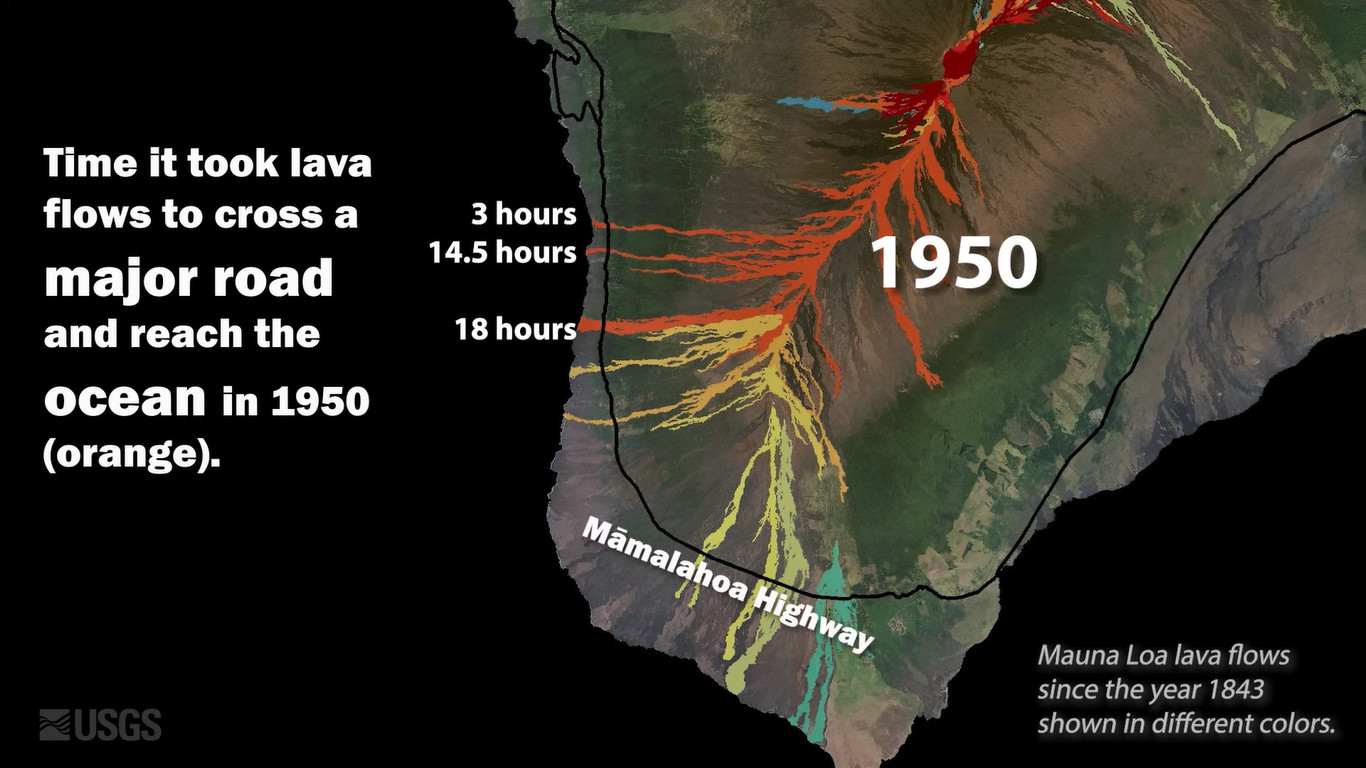(BIVN) – Mauna Loa is not erupting, and its USGS Volcano Alert Level is at NORMAL.
“Webcams show no signs of activity on Mauna Loa,” the Hawaiian Volcano Observatory wrote on December 1st. “Summit seismicity increased slightly at the beginning of November but returned to low levels in the weeks since then. Ground deformation indicates continuing slow inflation as magma replenishes the reservoir system following the 2022 eruption. SO2 emission rates are at background levels.”
This past week marked the one-year anniversary of the start of the most recent eruption of Mauna Loa. The USGS marked the occasion with a short article and an informational video.
From the article written by Steven Sobieszczyk of the USGS:
For months, USGS monitoring had shown that Mauna Loa was inching close to an eruption. Just before midnight on Sunday, November 27, 2022, the wait was over.
As we commemorate the one-year anniversary of Mauna Loa’s 2022 eruption on November 27, let’s look back at the dynamic events that unfolded over those twelve harrowing days.
Last year’s Hawaiian eruption, which was preceded by months of earthquakes and ground deformation, captured the attention of both scientists and people the world over.
The spectacle began just before midnight that Sunday evening, as lava emerged from Mokuʻāweoweo, the summit caldera atop Mauna Loa volcano. The eruption triggered a swift response from scientists at the USGS Hawaiian Volcano Observatory, who worked closely with officials from the County of Hawaiʻi Civil Defense Agency, and Hawaiʻi Volcanoes National Park. Initial concerns focused on notifying Island of Hawaiʻi residents, particularly those living on Mauna Loa’s southwestern slopes, that their community could be impacted. Photos and videos of lava flows swirling online further heightened tensions that the new eruption could be dangerous to those living nearby.
By early on the morning of November 28, it started to become apparent that the lava flows were not an immediate threat because all the new fissures from the eruption began opening on the remote northeast flank of the mountain. Although they were visible from Kona, these lava flows were miles from any community.
Over the next few days, the eruption’s intensity held the public’s fascination, with a constant litany of pictures of lava flows circulating on social media and videos livestreaming on YouTube. The volcanic activity, while awe-inspiring, eventually crept close enough to pose a risk to a critical road, the Daniel K. Inouye Highway, which connects the city of Hilo with the western side of the Big Island. Thankfully, on December 8, the main lava flow stalled about 1.7 miles from the highway, averting a potential island-wide crisis.
The brief but intense weeks of late 2022 served as a reminder of the inevitability of a future Mauna Loa eruption and underscored the importance of USGS volcano monitoring. Real-time monitoring serves as an essential tool for notifying communities of potential risks and keeping a natural hazard from becoming a natural disaster.


by Big Island Video News9:42 pm
on at
STORY SUMMARY
ISLAND OF HAWAIʻI - The USGS is marking the one-year anniversary of the start of the most recent eruption of Mauna Loa with a video presentation and article.